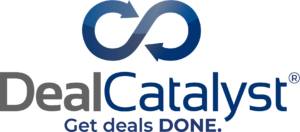September 3, 2024 - Last week the SEC – in a surprise move to many – adopted amendments to reporting requirements on Forms N-PORT[1] and N-CEN[2] (the “amendments”) and issued guidance regarding liquidity risk management (LRM) programs. The amendments were first proposed in 2022 as a small piece of the SEC’s significant Open-End Fund Liquidity Risk Management Programs and Swing Pricing proposed rulemaking (the “2022 proposal”). The 2022 proposal drew strong industry pushback against its mandatory swing pricing and hard close requirements as well as the elimination of the “less liquid” liquidity category for LRM programs. Of particular interest to our readers, the latter posed an existential threat to open-end loan funds and has been a significant advocacy focus for the LSTA in the nearly two years since its release. (See here for more.)
Despite (or perhaps due to) the controversy surrounding the majority of the proposal, the amendments adopted last week, which increased the scope and frequency of the two impacted filings, were not a major focus of public comments. Indeed, the SEC’s action with respect to the 2022 proposal was very narrow. Below is a summary of the amendments and the SEC’s newly issued LRM guidance. For further detail, see timely memos by Davis Polk, Dechert and Sidley.
Form N-PORT
- Once the amendments are effective, Form N-PORT reports will be required to be filed with the SEC on a monthly rather than a quarterly basis, and within 30 days of month end. Most data will now be publicly availability 60 days after each month end.
- Covered funds will report certain return and flow information only for the preceding month that the Form N-PORT covers rather than for the preceding three months.
- Covered funds will no longer be required to maintain records of this monthly information within 30 days of month end.
- The amendments will not require open-end funds to report aggregate liquidity classification information as was described in the 2022 proposal.
Form N-CEN
- Covered funds that are subject to Rule 22e-4 will be required to identify and provide certain information about service providers related to their LRM program.
LRM Guidance
- With respect to intra-month changes in investment-specific considerations, open-end funds should:
- Consider reviewing liquidity classifications if changes in portfolio composition are reasonably expected to materially affect one or more investment classifications.
- Consider classifying newly acquired investments intra-month if acquiring a particular investment is reasonably expected to result in material changes to the liquidity profile of the fund.
- With respect to highly liquid investment minimums, as outlined by Davis Polk, covered funds that do not primarily hold assets that are highly liquid investments should each:
- Consider its particular risk factors and consider establishing a higher highly liquid investment minimum than a comparable fund that is more liquid.
- Consider the volatility of its investment strategies.
- Consider the SEC’s general belief that liquidity risk management is better conducted primarily through construction of a fund’s portfolio, rather than by use of a line of credit or similar arrangement.
- With respect to LRM programs, the new SEC guidance also covered the meaning of “cash” for purposes of interpreting the rules relating to LRM programs, as well as related considerations around the liquidity of certain foreign investments.
- The term “cash” continues to mean U.S. dollars and does not include foreign currencies or cash equivalents,
- Funds need to consider conversion to U.S. dollars when classifying an investment.
Effective dates
The amendments become effective November 17, 2025, and covered funds will generally be required to comply with the amendments for reports filed on or after that date. Funds with net assets less than $1 billion will have until May 18, 2026 to comply with the amendments with respect to Form N-PORT reports.
So where does this leave the rest of the 2022 proposal?
That remains unclear. While the SEC only voted to adopt a narrow portion of the 2022 proposal in its actions last week, the SEC’s current Reg Flex Agenda suggests that the balance of the 2022 proposals, i.e., the controversial portions, including the LRM amendments of keen interest to open-end loan funds, could be re-proposed in April 2025. It is interesting, however, that in adopting pieces of the 2022 proposal the SEC adopted guidance with respect to those same LRM programs.
[1] With respect to Form N-PORT, the term “fund” refers to open-end funds (including exchange-traded funds (ETFs) but excluding money market funds (MMFs)), registered closed-end funds and ETFs organized as unit investment trusts.
[2] With respect to Form N-CEN, the term “fund” refers to open-end funds (including ETFs and MMFs), registered closed-end funds, ETFs organized as unit investment trusts, small business investment companies and registered unit investment trusts.






